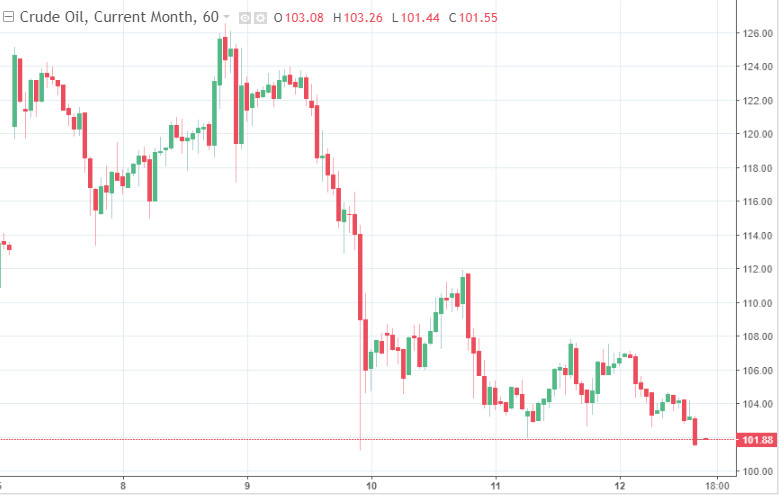On Monday, since the beginning of the trading session, oil prices have been falling. Investors are still focused on the tense geopolitical situation in Eastern Europe.
By the moment of writing the article, Brent futures had tumbled by 1.93% to $110.5 per barrel. During the previous session, the futures advanced by 2.2% to $112.67 per barrel.
Meanwhile, WTI futures with April delivery are trading at $106.6 per barrel that is 2.5% lower than the previous close. On Friday, the contracts jumped by 3.1% to $109.33 per barrel.
Last week, Brent crude added 5%, whereas the WTI benchmark appreciated by 6%.

Early on Monday, Brent futures were again under pressure. As a result, the asset lost its previous gains amid the news that Russia and Ukraine may somehow settle the issue.
Experts are sure that in the near future, the oil market will remain calm amid the absence of important news. That is why Brent crude may continue hovering within the range of $105-$115.
In case of positive news about the Russia-Ukraine conflict, the price may return to $100 per barrel. Otherwise, oil prices may surge to their yearly highs.

Another factor that may lead to a decline in oil prices is a possible drop in oil demand in Asia caused by a new wave of Covid-19 in China. Thus, the permanently increasing number of infections led to the blocking of the city of Shenzhen in southeastern China.
Amid the frightening news, oil prices decreased by 2% in Asian countries.
At the same time, the likelihood that Iran will resume supplying oil to the global market is fading away. Russia has demanded guarantees from the United States that anti-Russian sanctions will not hinder free trade and economic relations between Russia and Iran after the restoration of the agreement on the Iranian nuclear program.
However, the US has no intention to compromise. Thus, the negotiations came to a dead end due to strong positions of both parties.
Notably, the conclusion of the nuclear deal is likely to result in the withdrawal of sanctions against the export of Iranian oil and gas. In the best-case scenario, Iran may increase its production by 1 million barrels a day by the end of 2022. However, the countries have been discussing the issue for more than a year, but to no avail.
Occasional military conflicts in Libya are causing interruptions in oil production. Experts even think that a civil war may break out again soon. As a rule, oil production objects are the first to capture. Although the situation is aggravating, market participants are not pricing in the possible decline in oil output of 1 million barrels a day.
Meanwhile, on Friday, Baker Hughes reported that the number of drilling rigs on the territory of the US increased by 8 units, whereas the number of rigs in Canada declined by 7. Nevertheless, the drilling activity is still moderate since producers do not want to invest a lot of money in oil production amid the market uncertainty.
 English
English 
 Русский
Русский Bahasa Indonesia
Bahasa Indonesia Bahasa Malay
Bahasa Malay ไทย
ไทย Español
Español Deutsch
Deutsch Български
Български Français
Français Tiếng Việt
Tiếng Việt 中文
中文 বাংলা
বাংলা हिन्दी
हिन्दी Čeština
Čeština Українська
Українська Română
Română

